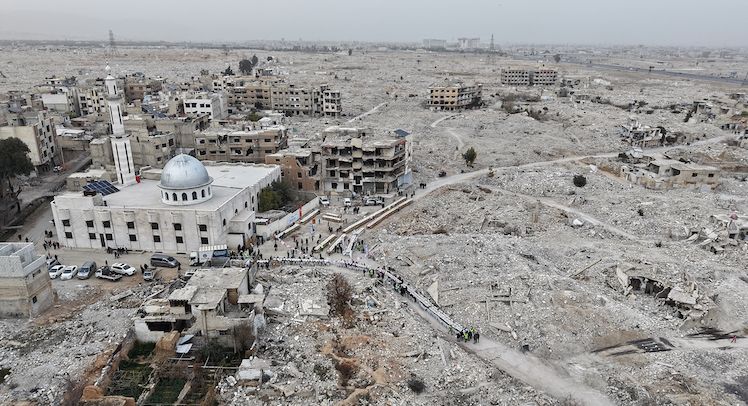Assume the Soviets have at least 25,000 nuclear weapons, Defense Secretary Dick Cheney said back in 1991, as the dying Soviet Union was trying to keep track of all its weapons systems. If “they are 99 percent successful, that would mean you could still have as many as 250 that they were not able to control.”
Cheney was simply saying, don’t get comfortable: The Soviets’ efforts could be nearly perfect and still be a world-shattering disaster. That number turned out to be a conservative estimate; according to Graham Allison, there were 35,000 nuclear weapons “at thousands of sites across a vast Eurasian landmass that stretched across eleven time zones.” Over 3,000 of those were reportedly strategic nuclear warheads on missiles that were aimed at the United States.
And yet, Allison wrote in 2012, “two decades have passed without the discovery of a single nuclear weapon outside Russia.” The United States played an important role in that success story.
This history is instructive when reading a slightly terrifying story about the amount of chemical weaponry that might still lay scattered across Syria’s war-torn territory. We are not talking about loose nukes, and we are not talking about an entity nearly the size of the USSR, of course. But I think there is wide agreement that loose chemical weapons in the Middle East represent a pretty dangerous situation all its own. Meanwhile, a thorough cleanup effort would require far greater involvement by the international community than is currently on the table.
The Organization for the Prohibition of Chemical Weapons estimates that there may still be over 100 chemical weapons sites. “The sites are suspected to have been involved in the research, manufacturing and storage of chemical weapons,” the New York Times reports. “Mr. al-Assad used weapons like sarin and chlorine gas against rebel fighters and Syrian civilians during more than a decade of civil war.”
One of those attacks took place in 2013, in which Assad’s forces used chemical weapons to kill more than a thousand in Ghouta. President Obama had set such an atrocity as his “red line” that would trigger a U.S. military response, but the president got cold feet and his secretary of state, John Kerry, bailed him out. Kerry suggested a U.S.-Russia deal to oversee the removal of chemical weapons from Syria.
At the time, Kerry believed there were 45 chemical-weapons sites. What happened next was entirely predictable: Assad lied about his chemical-weapons stockpile and the Obama administration didn’t much care—it only wanted to be able to say the problem had been solved diplomatically.
The Times notes that the number of such sites has been “a mystery” since Hayat Tahrir al-Sham led a rebel coalition that chased Bashar al-Assad out of Syria last year. In truth, it is still a mystery, but the OPCW’s number is certainly possible, and it is always better to err on the side of caution in such situations.
Meanwhile, the echoes of 1991 get louder. “Experts are cautiously optimistic about the government’s sincerity,” reports the Times. “The current government allowed a team from the watchdog to enter the country this year to begin work documenting the sites, according to people with knowledge of the trip.”
Yet the current chaos in Syria makes any such optimism foolish. As Cheney said back in 1991, even if the government was sincere in its efforts and quite competent in carrying out the weapons purge, a threat would almost certainly remain. Plus, the new Syrian government doesn’t quite have full control over all its territory—and there isn’t time to wait for it to consolidate its control.
Another parallel to 1991 is the fact that these loose chemical weapons are relics of a failing empire. Iran had stretched its influence all the way to the Mediterranean, and Assad was a satrap of Tehran. Israel’s military gains against two of Iran’s proxies—Hamas in Gaza and Hezbollah in Lebanon—combined with Assad’s overthrow caused the Iranian wave to recede for the time being.
The new Syrian government would like U.S. sanctions on it lifted, and it would also like Israel to give up its extended buffer zone sooner than later. None of that should be considered until there is a plan in place, preferably with U.S. and European involvement, to clean up every one of those chemical weapons sites.


















